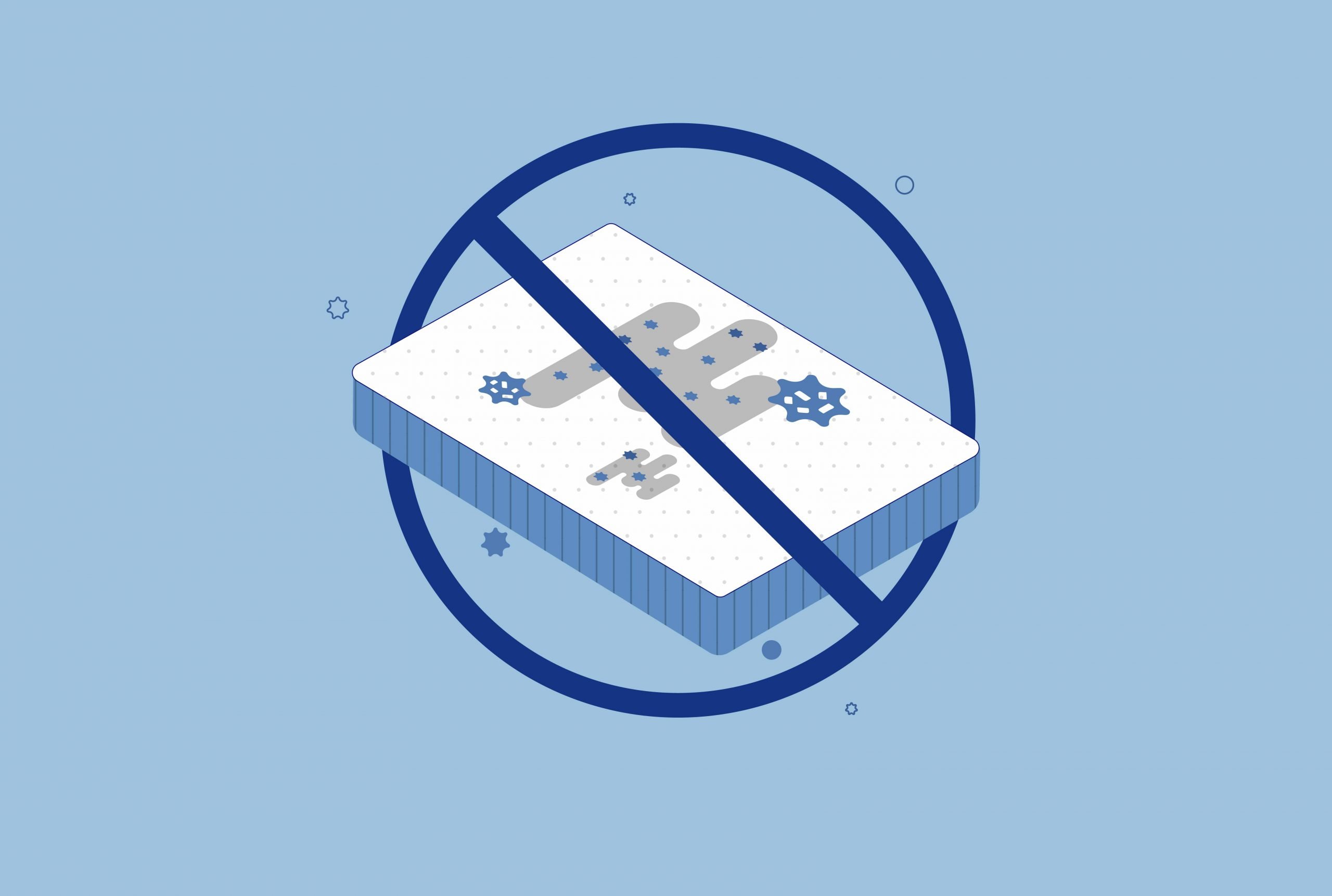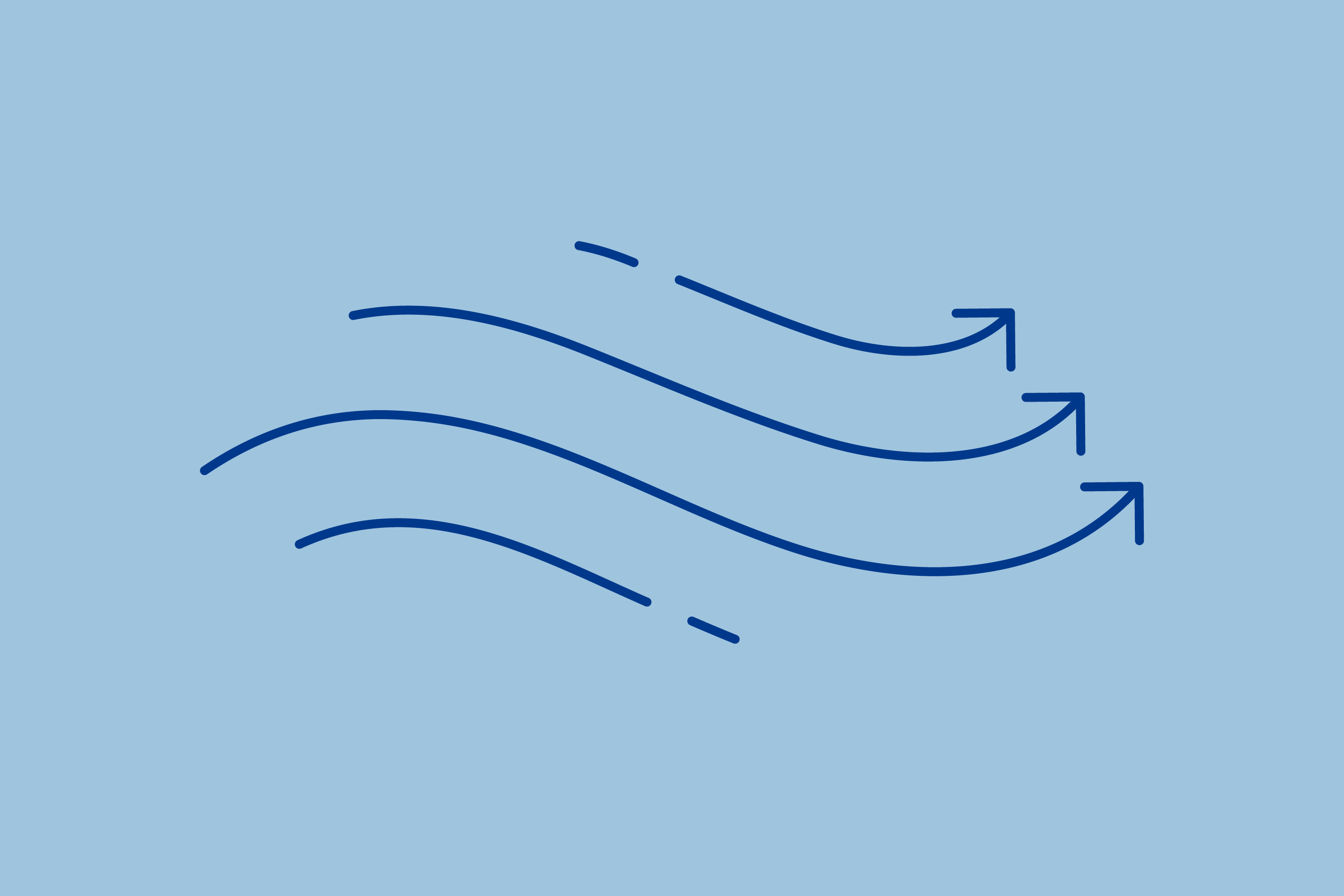Powered by Amerisleep, EarlyBird brings together a dedicated team of sleep science coaches, engineers, and product evaluators. We meticulously examine Amerisleep's family of products using our unique product methodology in Amerisleep's state-of-the-art laboratory. Our commitment to sustainability is reflected in our use of eco-friendly foam in our products. Each article we publish is accurate, supported by credible sources, and regularly updated to incorporate the latest scientific literature and expert insights. Trust our top mattress selections, for your personal sleep needs.
A mold-resistant mattress is important for several reasons, it helps protect our health by preventing the growth of mold, which can trigger allergies and respiratory issues. It also promotes a cleaner sleep environment, reducing the presence of harmful bacteria and unpleasant odors.
Mold-resistant mattresses also help extend the lifespan of the mattress by preventing mold-related damage and deterioration. Plus, a mold-resistant mattress can save us money in the long run, as we won’t have to replace it as frequently due to mold infestations. Lastly, it provides peace of mind, allowing us to rest comfortably knowing that we are sleeping on a hygienic and mold-free surface.
Best Amerisleep Mold Resistant Mattresses
Quick Guide: A 30-Second Summary
| Best Mold Resistant Latex Mattress | Amerisleep Organica |
| Best Mold Resistant Memory Foam Mattress | Amerisleep AS3 |
-
Price Range
$1049 to $2398
-
Mattress Type
Latex Hybrid
-
Firmness
5 to 6 out of 10 (Medium)
-
Availability
All sizes
-
Warranty
20 Years
-
Thickness
13 Inches
With a natural comfort, a balanced feel, and latex foam that resists mattress mold, the Amerisleep Organica is an eco-friendly, durable, and supportive hybrid mattress for sleep.
- Talalay latex comfort & transition layers
- Core of supportive pocketed coils
- Organic coverings of cotton and wool
- Side, back, and combo sleepers
- Hot sleepers
- Sleepers with synthetic sensitivities
The Amerisleep Organica mattress ensures a comfortable and responsive sleep experience without the concerns of overheating or sluggishness commonly associated with traditional memory foam. You can rest easy knowing that the Organica mattress is crafted with natural and high-quality materials, minimizing the risk of mold growth and offering a healthier sleep environment.
With its Talalay latex material and organic cotton and organic wool textiles, the Organica mattress stands out as a natural and sustainable alternative to traditional memory foam mattresses. It is free from synthetic components commonly found in traditional memory foam, making it an excellent choice for environmentally conscious individuals.
The GOTS-certified cotton cover fabric lets air flow through and whisk away heat and moisture, staying cool and dry throughout the night. The organic wool has passed the Standard 100 OEKO-TEX® test and goes beyond just adding a touch of cushion, serving as a natural fire barrier. This establishes a mattress without fiberglass.
This remarkable mattress is also crafted to offer great responsiveness. Its Talalay latex layers for comfort and transition ensure exceptional bounce and adaptability, allowing you to move comfortably during the night without feeling confined. The natural latex foam quickly conforms to your body’s shape, delivering personalized support and relieving pressure points.
Underneath the second layer of latex is the mattress’s supportive series of pocketed coils, individually wrapped for greater motion isolation. Ringing these coils is mattress edge support for easier mobility, with a thin base providing the coils with a stable surface to bounce off from.
Quick Summary
- Natural textiles and latex foam resist mold growth
- Materials from top to bottom enable easy airflow
- Supportive pocketed coils contour to the body
-
Price Range
$1049 to $2198
-
Mattress Type
Memory Foam
-
Firmness
5 to 6 out of 10 (Medium)
-
Availability
All sizes
-
Warranty
20 Years
-
Thickness
12 Inches
With a versatile medium-feel, pressure-relieving plant-based memory foam that resists mold growth, and targeted support, it’s no wonder the Amerisleep AS3 is our most popular mattress model.
- Eco-friendly memory foam cushion
- Comfort with zoned support technology
- Revolutionary cooling cover fabric
- Side, back, and combo sleepers
- Couples sharing a mattress together
- Hot sleepers
The Amerisleep AS3 offers a versatile medium feel and features a plant-based memory foam that accommodates various sleeping styles. It not only excels as an all-rounder mattress, providing exceptional comfort and support for a variety of sleep styles, but it also possesses mold-resistant properties.
Forming the surface of the Amerisleep AS3 is Refresh fabric, a material that goes beyond temperature neutrality. To create a cozy temperature for sleep, the fibers transform body heat into infrared energy. As a bonus, when this infrared energy is released it seeps into local areas of the body and promotes greater recovery.
The innovative Bio-Pur® memory foam comfort layer lies at the heart of this incredible mattress. This advanced layer combines the contouring and flexibility of traditional memory foam with the bounce and breathability of latex.
Unlike regular memory foam, the plant-based Bio-Pur® is specially designed to address concerns like heat retention and slow response time. It molds to the shape of your body, delivering exceptional comfort, and quickly returns to its original form when you change positions. The comfort layer of Bio-Pur® foam also creates a hypoallergenic and mildew-resistant sleeping surface.
The AS3 mattress has a special transition layer with HIVE® technology, which is divided into five zones. These zones are designed to give different kinds of support and relief to different parts of your body. This helps make sure that you feel comfortable and supported all over. The unique design of the mattress helps support your lower back and relieves pressure points on your body.
The base of the AS3 is a durable layer of Bio-Core®, engineered to strengthen the mattress’s overall structure for long-lasting comfort.
Quick Summary
- Plant-based memory foam deters mold growth
- Cover fabric promotes coolness and restoration
- Transition and base foam create enduring support
Why Mattress Mold is Bad
Mattress mold is harmful for several reasons. Breathing in mold spores can trigger allergies and respiratory issues, especially for people who are already sensitive or have asthma. In addition, mold can produce toxic substances called mycotoxins, which can be harmful to our health.
Mold growth on a mattress can also cause damage. When mold on a mattress grows, it can eat away at the materials and cause them to deteriorate. This can lead to a shorter lifespan for the mattress and make it less supportive and comfortable to sleep on.
Additionally, dust mites, which often come along with mold growth, can make the problems with the mattress even worse. Dust mites can cause allergies, making the sleep environment even more uncomfortable and unhealthy.
High humidity and moisture create an ideal environment for mold to thrive. When conditions are favorable, mold appears on surfaces, including your mattress. If the mold on your mattress is not addressed, it can release spores into the air. These spores can then settle on other surfaces and start growing there, leading to a larger mold problem throughout your home.
Dealing with such a widespread mold issue can result in costly repairs, a musty smell, and extensive cleanup efforts. Therefore, it is crucial to take immediate action when mold appears on your mattress to prevent further spread and the associated consequences.
To prevent mattress mold, it is important to keep your mattress clean and dry. Addressing any spills or accidents promptly is essential, as moisture is a major factor in mold growth. Regularly cleaning your mattress and using a mattress protector can help prevent mold growth and maintain a safe and comfortable sleep environment.
Ensuring proper ventilation in your bedroom is also important. If needed, consider a dehumidifier and air purifier to limit the accumulation and growth of mold spores. Taking these preventive measures and promptly addressing any surface mold growth is crucial to avoid mold exposure and ensure a safe and comfortable sleep environment, especially in areas with high humidity.
How Do I Know If I Have Mold In My Mattress?
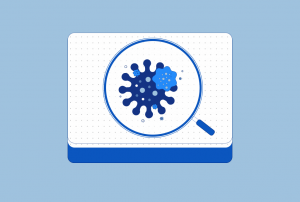 You can determine if your mattress has a mold infestation by following a few simple steps. First, visually inspect your mattress for any visible signs of mold growth, such as dark spots or discoloration on the surface.
You can determine if your mattress has a mold infestation by following a few simple steps. First, visually inspect your mattress for any visible signs of mold growth, such as dark spots or discoloration on the surface.
Next, pay attention to any unpleasant or musty odor coming from your mattress. Mold often emits a distinct smell, so if you detect any strange or unpleasant odors, it could indicate the presence of mold.
Another way to check for mold is by observing your own health and any symptoms you may be experiencing. Mold exposure can lead to allergies, respiratory issues, and other health problems. If you notice an increase in these symptoms when you are near or on your mattress, it could be a sign of mold.
Lastly, consider the environmental conditions in your bedroom or the area where your mattress is located. If it is prone to high humidity or moisture, it creates an ideal environment for mold to thrive. This increases the likelihood of mold being present in your mattress. Or if you have a water-damaged mattress from a flood or other natural disaster, you’ll likely deal with mold growth and other issues.
If you suspect a mold infestation in your mattress, it is important to address the issue promptly. Mold can cause health problems and damage the mattress itself. While you can consider seeking professional help or consulting with a mold remediation expert to safely and effectively remove the mold, it’s often best to simply replace the mattress.



Keeping Mold out of the Bedroom
To keep mold out of the bedroom, there are several important steps you can take. First, regularly inspect and clean the bedroom, paying close attention to areas where moisture can build up, such as window sills, corners, and bathroom entrances. This helps to prevent mold growth by removing any potential sources of moisture.
Second, promptly address any water leaks or spills in the bedroom. If you notice a leak or a spill, take immediate action to dry the affected area and fix the source of the water to prevent mold in the bedroom from developing.
Third, ensure proper ventilation and air circulation in the bedroom. When we sleep, our bodies release moisture, which can accumulate in the mattress if not properly ventilated. Good airflow helps to reduce moisture buildup, making it less likely for mold to grow. You can achieve this by opening windows, using fans in the bedroom, or using a dehumidifier to maintain optimal humidity levels.
Similarly, an air purifier benefits you and betters air quality by removing common allergens. This includes mold spores, along with other nasty irritants.
A supportive bed base should also be ventilated to allow airflow, such as with spaces between bed slats. With a proper bed base, air can circulate more freely, allowing the mattress to dry out and reducing the chances of mold formation. Restricted airflow is one reason you don’t want to put a new mattress on top of an old mattress.
Another effective measure is to use mold-resistant materials in the bedroom. Opt for mold-resistant paint or wallpaper, which can help create an environment that is less favorable for mold growth. You can even further promote sleep by choosing a good bedroom color for sleep and redecorating with mold-resistant paint.
Lastly, regularly clean and maintain bedding, including mattresses and pillows. Keep them dry and use mattress protectors to prevent moisture from seeping in and creating an ideal environment for mold.
Protect Your Mattress from Mold
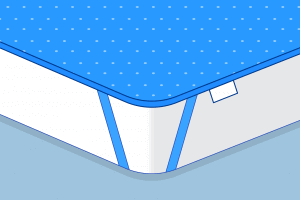


By using a mattress protector size that matches your bed, you actively protect your mattress from moisture and reduce the risk of mold infestation. It acts as a shield, blocking the entry of mold spores and preventing them from settling and thriving in the mattress.
Furthermore, a mattress protector is easy to clean and maintain. You can simply remove and wash the mattress protector regularly, ensuring that any moisture or spills are properly cleaned, preventing mold growth.
When choosing a mattress protector, look for one that is waterproof or water-resistant to provide maximum protection against moisture. Additionally, consider a protector that is breathable and allows for proper airflow, as good ventilation helps to keep the mattress dry and mold-free.
Enhance Indoor Air Quality To Prevent Mold
By using an air purifier, you actively reduce the presence of mold spores in the air, which can help prevent respiratory issues and allergies caused by mold exposure. It is especially beneficial for individuals who are sensitive or have existing respiratory conditions, such as those who need to sleep better with asthma.
Dehumidifiers, on the other hand, help to control and reduce humidity levels in your home, particularly in damp environments. These devices remove excess moisture from the air, which is essential in preventing mold growth. By maintaining optimal humidity levels (around 30-50%), dehumidifiers create an environment that is less favorable for mold to thrive.
Using a dehumidifier actively prevents the buildup of moisture, reducing the risk of mold infestation in your living space. It is particularly important in areas with high humidity or where moisture tends to accumulate, such as basements, bathrooms, laundry rooms or even your bedroom.
When selecting an air purifier or dehumidifier, look for models that are suitable for the size of your room and have features like filters or automatic humidity controls. Regularly clean and maintain these devices as instructed by the manufacturer to ensure optimal performance.
By incorporating air purifiers and dehumidifiers into your home, you take active measures to improve air quality, promote air circulation, and prevent mold growth. These devices contribute to a healthier and more comfortable living environment for you and your family.
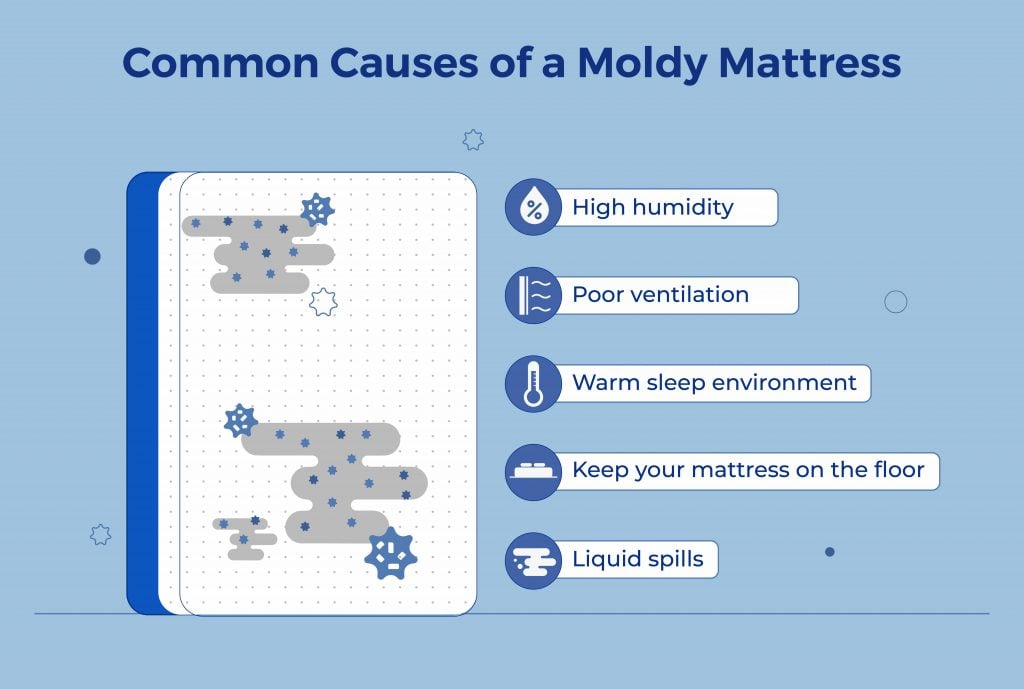

Types of Mattresses and Mold Resistance
When it comes to choosing a mattress, comfort and support are often top priorities. However, it’s also important to consider the potential for mold growth and its impact on your sleep environment. Mold can not only lead to unpleasant odors but also pose health risks, especially for individuals with allergies or respiratory conditions.
There are different types of mattresses available that offer varying levels of mold resistance. Understanding these mattress types and their mold-resistant properties can help you make an informed decision and create a sleep surface that is both comfortable and safe.
Memory Foam
Memory foam mattresses are crafted with multiple layers of dense polyurethane foam, offering exceptional support and relief for joint pain. The unique structure of memory foam helps prevent the growth of mold while providing a comfortable sleep surface.
Plus, the motion isolation abilities of memory foam makes it an excellent mattress for couples, ensuring undisturbed rest throughout the night. For added comfort, choosing a memory foam mattress with cooling technology can regulate body temperature, resulting in a more comfortable and restful sleep experience.
Latex
Latex emerges as a durable and eco-friendly mold-resistant mattress option. Latex mattresses can be made from various types of latex, including synthetic, blended, and natural latex, either independently or combined with other foams or supportive coils. We recommend natural latex as the best option for comfort and durability.
One of the standout qualities of natural or organic latex is its responsiveness, as it quickly regains its shape, preventing you from feeling trapped in your bed and offering a comfortable and supportive sleeping surface.
Unlike memory foam, natural latex provides a slight hugging sensation without fully conforming to your body. This balanced support ensures a comfortable sleep experience. Additionally, latex mattresses are renowned for its cooling properties. Its structure allows for airflow between you and the mattress, effectively dissipating body heat.
Innerspring
When it comes to finding the perfect mold-resistant mattress, many people choose the classic option of an innerspring mattress. These mattresses are known for their breathability and excellent edge support, which keeps you from rolling off the bed. Typically, innerspring mattresses have a thin top comfort layer and a support system made of steel coils.
One of the main benefits of innerspring mattresses is their affordability, making them a suitable choice for various budgets. However, it’s important to note that using a box spring may be necessary to optimize their performance. Light sleepers or individuals with specific joint support needs might prefer other types of mold-resistant mattresses that better cater to their preferences.
Hybrid
When it comes to finding the best mold-resistant mattresses, you can’t go wrong with hybrid mattresses. They combine the features of traditional spring beds and foam mattresses seamlessly. These mattresses have a comfort layer of 2 to 3 inches, made of either latex foam or memory foam.
Hybrid mattresses are supported by a pocketed coil base, which ensures that weight is distributed evenly and provides a balance of support and body-hugging comfort. What’s more, they also offer mattress edge support, which is especially beneficial for people with mobility issues.
If you’re a side sleeper looking for a bed with a bit more bounce, hybrid mattresses are the ideal choice. Hybrid mattresses for side sleepers provide the perfect combination of pressure point relief and a comfortable sleeping surface, unlike innerspring mattresses that can feel too firm against your body.
Air Mattresses
Air mattresses are designed with innovative materials that help prevent mold growth, ensuring a clean and healthy sleeping environment. Able to inflate and deflate at will, air mattresses are easy to clean and maintain, making them an excellent choice for those concerned about mold allergies or sensitivities.
Air mattresses are also highly portable, making them ideal for camping trips or accommodating guests at home. However, they are prone to leaks, which can cause them to quickly deflate unless they are properly patched. They’re good if you want an RV mattress that resists mold growth, but for a mattress at home, you may want a bed that won’t fall apart from a leak or hole.
Waterbeds
Waterbeds are a superb choice for those seeking the best mold resistant mattress. They can feature advanced technology that prevents the accumulation of moisture, inhibiting the growth of mold and mildew on the surface. And their impermeable covering keeps mold spores from growing within the waterbed.
With their water-filled chambers, waterbeds provide exceptional support and conform to the contours of your body, promoting a restful night’s sleep. Some, however, don’t enjoy the feel, finding it unsupportive. Others avoid waterbeds for fear they’ll spring a leak and make a mess.
Mattress Firmness
When it comes to choosing the best mold resistant mattress, mattress firmness is a key factor to consider. The firmness of a mattress refers to how soft or firm it feels when you lie down. While mold resistance ensures a clean and healthy sleep environment, finding the right mattress firmness level is equally important to ensure a comfortable and supportive sleep experience.
Firmness is not necessarily tied to durability, as you can find mattresses that won’t sag with soft or firm feels. The best mattress firmness for you works with your sleep position and body weight to support and cradle you as needed.
Sleeping Position
To sleep well, it’s important to pick a comfortable mattress that suits how you sleep. It should keep your spine in line and help relieve pressure points. Different sleeping positions have different requirements for support and firmness. The right mattress can make a big difference in how comfortable and supported you feel during the night.
Side Sleepers
When looking for the perfect mattress for side sleepers, it’s important to prioritize a soft, medium-soft, or medium level of firmness. This helps to relieve pressure points and reduce the chances of experiencing joint and back pain. Choosing a mattress that provides excellent contouring and support is essential for keeping your spine aligned correctly.
Back Sleepers
If you sleep on your back most of the time, it’s a good idea to find a mattress that’s best for that sleeping position. We suggest choosing a mattress for back sleeping that is medium to medium-firm. This helps keep your spine in a good position and prevents your hips from sinking too much. By doing this, the mattress reduces pressure and lowers the chances of feeling uncomfortable or in pain while you sleep.
Stomach Sleepers
If you enjoy lying flat on your stomach, it’s important to find the right mattress for stomach sleeping. We recommend choosing a firm mattress because it helps keep your back in a good position and stops your spine from stretching too much. When your spine is aligned properly, it can help you feel more comfortable and have a better sleep.
Combination Sleepers
If you’re someone who changes positions while sleeping, it’s crucial to find a mattress for combination sleeping that suits your needs. We suggest a medium to medium-firm mattress as it helps your spine stay aligned and reduces muscle strain. A mattress with great contouring and support can also help relieve pressure points and make it more comfortable when you switch positions.
Body Type
Choosing the right mattress for your body type is just as essential as picking a bed that matches your sleep position.
Lightweight Sleepers
If you’re a lightweight sleeper, it’s a good idea to think about getting a mattress in the softer end of the range for your sleep position. Often, that means a medium-soft to medium-firm mattress. This range gives you a nice balance between comfort and support, so you can sleep well without hurting your spine.
Petite sleepers press down less due to their body weight so they need mattresses for lightweight sleepers with ample cushioning. Otherwise, pressure points could build up into pain.
Heavier Sleepers
Plus-sized sleepers should consider opting for a firmer mattress in their sleeping position range to provide the necessary support and comfort. Choosing a firmer mattress helps to evenly distribute weight, reducing the risk of sinking too much and causing discomfort or affecting spinal alignment. Mattresses for heavier sleepers offer a sturdy and stable surface, ensuring proper support for the body and minimal aches.
Mattress Policies
When you purchase a mattress, it’s common for the company to include a warranty that helps in fixing or replacing it if any issues arise. The main purpose of a mattress warranty is to safeguard you, the consumer. Reputable mattress brands often provide warranties that specifically cover significant defects that impact the bed’s overall structure and construction.
While many brands are transparent and upfront about what their mattress warranty covers, it is still crucial to take the time to carefully read through all the details. By doing so, you can fully understand what is covered and what is not. Mattress mold is usually not covered under a warranty, as it is considered the consumer’s responsibility to protect their mattress from conditions that can allow mold to flourish.
In case you have any uncertainties or queries regarding the warranty’s specific terms and conditions, reach out to the company’s customer service team. They will be able to address any concerns or provide further clarification, ensuring that you have a clear understanding of the warranty’s coverage.
Frequently Asked Questions
How do I keep my mattress from getting moldy?
To prevent mold growth on your mattress, it’s important to take a few preventive measures. Firstly, keep your mattress clean and dry. Avoid spilling liquids on it and promptly clean up any accidents. Consider using a waterproof mattress protector to shield it from moisture. Adequate airflow in the room is essential, as mold thrives in damp conditions. Keep windows open or use fans to promote air circulation and prevent excess humidity.
Regularly vacuum your entire mattress every few months to eliminate dust, dead skin cells, and other debris that can contribute to mold formation. Additionally, remember to rotate or flip your mattress periodically to distribute weight evenly and prevent the accumulation of moisture in specific areas.
How fast can mold grow on a mattress?
Mold can start growing on a mattress relatively quickly under certain conditions. When moisture is present, such as from spills, accidents, or excessive humidity, mold spores can begin to develop and multiply. Within 24 to 48 hours, visible mold growth can occur if the conditions are favorable.
To prevent mold growth on a mattress, it’s crucial to address any moisture issues promptly. Clean up spills or accidents immediately and thoroughly dry the affected area. If you notice visible mold on your mattress, it’s important to take immediate action to remove it or replace the mattress.
Do mattress protectors prevent mold?
Yes, mattress protectors can help prevent mold growth on a mattress surface. They act as a barrier between the mattress and potential sources of moisture, such as spills, sweat, or accidents. By using a waterproof mattress protector, you can prevent liquids from seeping into the mattress and creating a damp environment that allows mold growth.
However, it’s important to note that mattress protectors alone cannot guarantee absolute mold prevention. If your mattress already has mold or is exposed to excessive moisture without a protector, you must address the underlying issue and take appropriate measures to remove the mold and dry the mattress thoroughly.
What are the symptoms of mold exposure?
Some common symptoms of mold exposure include coughing, sneezing, and a runny or stuffy nose. You may also experience watery eyes, itching, or irritation in your throat or lungs. For some people, mold exposure can trigger or worsen existing respiratory conditions such as asthma or allergies.
Other symptoms of mold exposure can include headaches, fatigue, and difficulty concentrating. In some cases, individuals may also experience skin rashes or allergic reactions when in contact with mold. It’s important to note that the severity of symptoms can vary from person to person and depend on the extent of mold exposure.
If you think you have mold in your home or experience any of these symptoms, seek medical advice and consider getting your home inspected for mold.
What is the difference between mold and mildew?
The main difference between mold and mildew lies in their appearance and the depth of their growth. Mold is typically green, black, or blue and has a fuzzy or slimy texture. It tends to grow deeper into surfaces, penetrating porous materials like walls, wood, or fabrics. Mold thrives in moist environments and can spread rapidly if not addressed.
On the other hand, mildew is usually white or gray and has a powdery or fluffy texture. It often grows on the surface of materials and is commonly found in damp areas like bathrooms, basements, or kitchens. Mildew is more superficial and can be easily wiped away or cleaned with common household cleaners. Mold is more concerning as it can grow deeper into surfaces and potentially cause structural damage.
Is it safe to sleep in a bedroom with mold?
Sleeping in a bedroom with mold can pose risks to your health, especially if the mold is of the toxic variety. Molds, such as Stachybotrys chartarum, can release harmful mycotoxins into the air, which can be inhaled and cause health issues. Exposure to toxic mold can lead to respiratory problems, allergic reactions, and other symptoms like coughing, wheezing, sneezing, or throat irritation.
Prolonged exposure to toxic molds may even result in more severe health problems. If you suspect mold in your bedroom, it’s important to address the issue promptly. Remove any visible mold and clean the affected area thoroughly. However, it’s crucial to take the necessary precautions to protect yourself during the process. Wear gloves, a mask, and eye protection to avoid direct contact with the mold and its spores.
The Bottom Line
In conclusion, mattress mold can have negative effects on both our health and the lifespan of the mattress itself. Mold spores can trigger allergies and respiratory issues, while mycotoxins produced by mold can be harmful. Mold growth on a mattress can lead to the deterioration of materials and a less supportive and comfortable sleep surface.
High humidity and moisture create an ideal environment for mold or mildew to thrive, leading to a larger mold problem throughout the home if not addressed. Dealing with widespread mold issues can be costly and time-consuming. To prevent mattress mold, it is essential to keep the mattress clean and dry.
To keep mold out of the bedroom, regular cleaning, addressing water leaks, ensuring proper ventilation, and using mold-resistant materials are recommended. Using a mattress protector is an effective way to prevent mold spores from settling. By taking preventive measures and promptly addressing any signs of mold, we can ensure a safe and comfortable sleep environment, especially in areas with high humidity.
About the author
Mitchell Tollsen is a graduate student and a freelance writer who’s contributed to the Early Bird blog for three years. Mitchell’s always been fascinated by the science of sleep and the restorative processes our bodies undergo when at rest. The self-titled “Sleep Expert” is always looking for ways to improve his shut-eye, and throughout the years has implemented numerous lifestyle changes and tried dozens of sleep-promoting gadgets to determine the best ways to truly get better rest.
View all posts